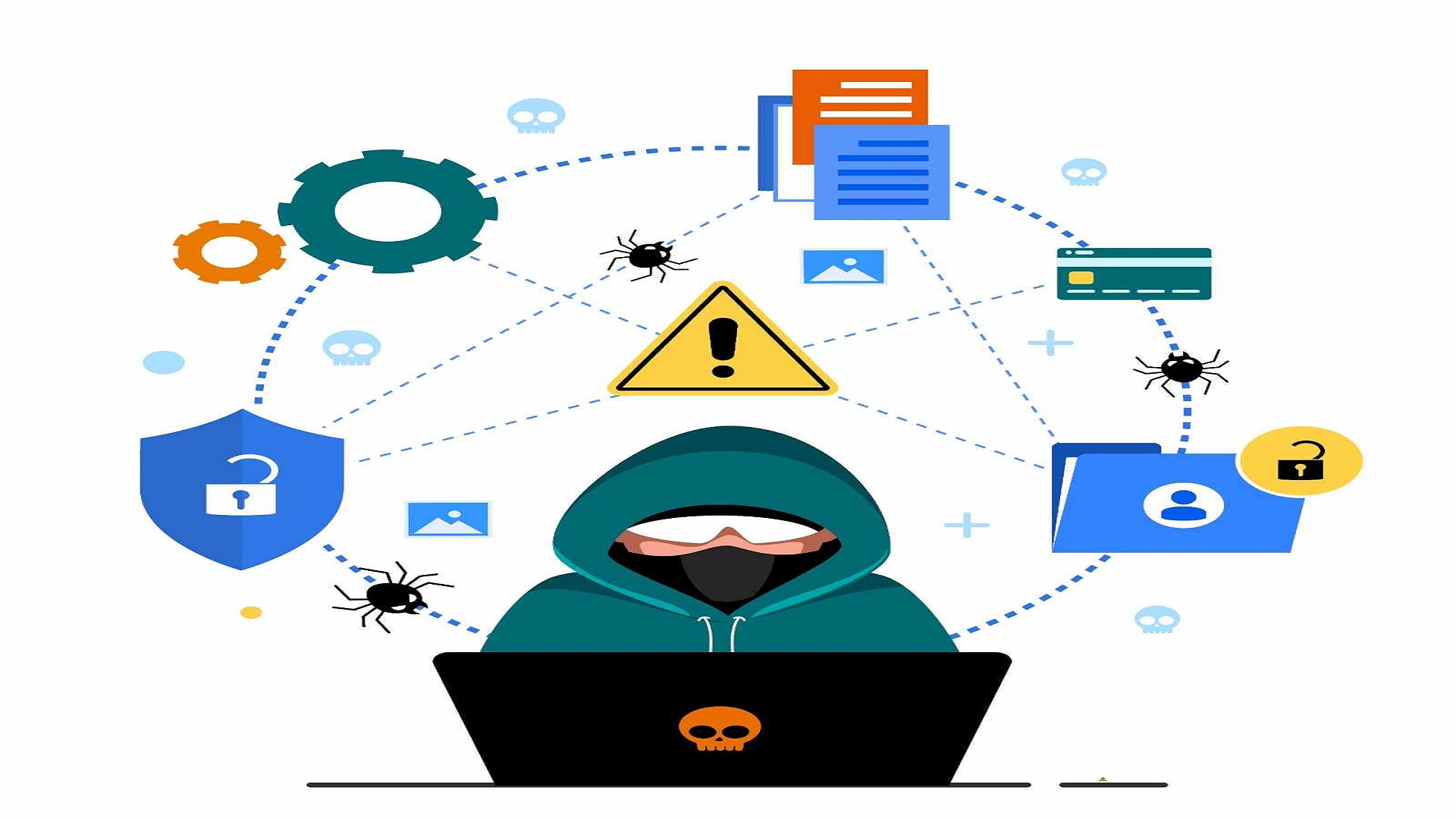In today’s digital retail landscape, mobile devices have become integral to operations, from facilitating transactions to gathering customer insights through analytics. However, this increased reliance on mobile technology introduces significant cybersecurity challenges. Retailers must implement robust mobile security protocols to protect sensitive data and maintain customer trust.
Understanding The Intersection of Mobile Security and Retail Analytics
Retail analytics involves collecting and analyzing data to optimize operations, enhance customer experiences, and drive sales. Mobile devices, including smartphones and tablets, play a crucial role in this ecosystem by enabling real-time data collection and customer engagement. However, these devices are susceptible to various security threats, such as malware, phishing attacks, and unauthorized access, which can compromise sensitive information.
Common Mobile Security Threats in Retail
Phishing Attacks: The Silent Entry Point for Hackers
Phishing remains one of the most common and dangerous mobile threats in retail environments. Cybercriminals send deceptive emails, SMS messages (smishing), or fake app alerts that appear to come from trusted sources — such as internal IT teams, payment processors, or suppliers.
Once an unsuspecting employee clicks a malicious link or enters login credentials into a spoofed site, attackers gain unauthorized access to internal systems, retail analytics dashboards, or customer databases.
Mobile-specific risk: Many mobile email apps and browsers hide full URLs, making it harder to detect suspicious links — especially on smaller screens. This makes mobile users particularly vulnerable.
Example: A retail employee receives an SMS pretending to be from a company POS provider asking them to “verify your account.” The link leads to a fake login page where credentials are stolen.
Malware and Ransomware: Infiltration Through Apps and Downloads
Malicious software can infect retail mobile devices through unsafe downloads, fake retail-related apps, or even rogue QR codes. Once installed, malware can:
- Harvest sensitive data (e.g., customer transactions, stock levels).
- Record keystrokes to steal credentials.
- Provide attackers with remote control of the device.
- Encrypt entire systems in ransomware attacks, demanding payment in exchange for data recovery.
Retail employees often use their devices to access business apps (BYOD – Bring Your Device). Without proper mobile device management (MDM), these endpoints can become a direct route for attackers into retail infrastructure.
Example: A staff member downloads a free inventory scanner app that looks legitimate but contains hidden spyware. It starts transmitting POS login credentials to an external server.
Unsecured Wi-Fi Networks: A Gateway for Eavesdropping and Data Theft
Retail workers may connect to public or open Wi-Fi networks while traveling, at cafés, or during breaks — exposing the device to man-in-the-middle (MITM) attacks. In such attacks, cybercriminals intercept communications between the device and servers, allowing them to:
- Steal analytics data or customer details in transit.
- Inject malicious code into mobile apps.
- Hijack sessions and impersonate users within internal systems.
Even in-store Wi-Fi, if improperly configured or not segregated from business networks, can become a risk vector.
Mitigation Tip: Use VPNs, secure Wi-Fi configurations, and automatic disconnection protocols on mobile devices to limit exposure.
Outdated Software: A Hidden Threat with Known Exploits
Mobile devices running outdated operating systems or apps are easy targets for cybercriminals. Many attacks exploit well-documented software vulnerabilities that have already been patched by developers — but only if businesses apply the updates.
Retailers often delay updates on store tablets or internal apps due to compatibility concerns, not realizing that this delay creates a large attack window.
Consequences:
- Hackers can exploit these unpatched systems to install malware.
- Older mobile operating systems may lack the security enhancements needed to resist modern attacks.
- App vulnerabilities could allow attackers to extract analytics data or manipulate business functions.
Example: An old version of a retail analytics app used by staff in multiple stores contains a vulnerability that allows attackers to extract real-time sales data through the API. A simple update could have closed the loophole.
Implementing Effective Mobile Security Protocols for Retail Analytics
To protect modern retail analytics systems — which manage sensitive data like real-time sales, customer behavior, and inventory intelligence — retailers need to adopt comprehensive mobile security protocols. Here’s a user-friendly breakdown of five essential strategies, each explained with actionable insights and relevant real-world examples.
Mobile Device Management (MDM): Centralized Device Oversight
Mobile Device Management (MDM) software provides centralized control over all mobile devices connected to a retail organization including both company-owned and BYOD (Bring Your Own Device) setups.
It’s Critical Because,
- Ensures uniform security policies across devices (e.g., password policies, access restrictions).
- Allows for remote locking or data wiping of stolen or lost devices to prevent unauthorized data access.
- Offers real-time visibility into device health, compliance, app usage, and potential risks.
Real-World Example
A European fashion retailer leverages MDM to manage tablets used by sales associates in fitting rooms. The system ensures GDPR compliance and enables remote data wipes in case of theft.
Regular Software Updates: Proactive Threat Prevention
Software updates include critical patches for operating systems, apps, and mobile security platforms — addressing vulnerabilities before attackers can exploit them.
It’s Critical Because,
- Closes security gaps by fixing known vulnerabilities.
- Prevents attackers from exploiting outdated systems.
- Automated update tools reduce the risk of human error or delays.
Industry Insight: Retailers using mobile Point-of-Sale (mPOS) systems must ensure their analytics apps are consistently updated to protect sensitive customer purchase data.
Secure Wi-Fi Usage: Safeguarding Network Access
Secure Wi-Fi practices involve connecting only to authenticated networks and using encryption tools like Virtual Private Networks (VPNs) to ensure safe data transmission.
It’s Critical Because,
- Prevents man-in-the-middle (MITM) attacks on public or unprotected Wi-Fi.
- A VPN encrypts data traffic, making it unreadable to unauthorized parties.
- Network segmentation (e.g., separating guest Wi-Fi from operational systems) avoids cross-contamination between networks.
Tip for Multi-Branch Retailers: Adopt enterprise-grade Wi-Fi with MAC address whitelisting. For example, only verified mobile devices used by staff and kiosks should connect to operational networks.
Employee Cybersecurity Training: Reducing Human Error
Cybersecurity awareness training equips employees to identify and respond appropriately to mobile-based threats like phishing, fake apps, and unauthorized downloads.
It’s Critical Because,
- Human error remains a leading cause of mobile security breaches.
- Trained staff are less likely to fall victim to phishing, malware, or social engineering attacks.
- Ongoing, modular training (e.g., short monthly sessions) keeps knowledge fresh and behavior secure.
Case Study
A U.S. retail chain saw a 70% reduction in phishing-related incidents after introducing monthly mobile cybersecurity training for in-store staff in 2023.
Data Encryption: Locking Down Information at Every Stage
Encryption converts sensitive data into an unreadable format unless accessed with the correct cryptographic key protecting information both at rest and in transit.
It’s Critical Because,
- At rest: Secures data stored on devices or servers, such as customer profiles or loyalty metrics.
- In transit: Protects data sent between devices, cloud services, and analytics dashboards.
- Encryption is vital for regulatory compliance (e.g., GDPR, PCI DSS, HIPAA) and customer trust.
Retail Use Case
A multinational retailer with stores in the USA and Europe encrypts mobile analytics traffic with AES-256 encryption. This ensures regional managers can access sensitive sales and inventory insights without risking data exposure.
Case Study 1: Marks & Spencer’s Cybersecurity Setback – A Wake-Up Call for Retail Mobile Systems
Overview: Marks & Spencer (M&S), a major British retail chain, faced a critical cybersecurity breach that disrupted its operations and exposed sensitive customer data. Although the breach was not directly linked to mobile devices, it highlighted how vulnerabilities across interconnected retail systems — including mobile-enabled platforms — can lead to widespread disruption.
Key Points:
- The breach occurred through overlooked security patches and inadequate access control mechanisms.
- Over 100,000 customer records were potentially exposed, including personal and transactional information.
- M&S suffered an estimated financial impact exceeding £300 million, factoring in investigation, remediation, and reputational damage.
- While the breach did not originate from mobile apps or devices, analysts found that internal systems lacked adequate integration with mobile threat detection, showing how mobile endpoints could be a risk vector in the future.
What We Learn is, retailers must not treat mobile security as a separate silo. Mobile tablets used in stores, staff smartphones connected to internal Wi-Fi, and customer-facing mobile apps are now active components of retail analytics systems. Unprotected mobile endpoints can become an easy entry point for attackers.
Case Study 2: Fashion Brands (👗) Strengthen Mobile Cyber Defenses Amid Growing Attacks
Leading fashion retailers around the world including high-street brands and luxury names are increasingly dependent on mobile apps and data analytics to drive customer engagement and optimize marketing. However, this digital evolution has also opened new doors for cyber threats, especially those targeting mobile platforms.
Key Points:
- One prominent online fashion brand recently experienced a credential-stuffing attack hackers used previously leaked credentials to break into thousands of customer accounts, many through their mobile apps.
- Attackers exploited the lack of multi-factor authentication and insufficient session security on these platforms.
- Following the incident, the company adopted AI-based real-time monitoring tools, implemented device fingerprinting, and enhanced user authentication to protect their mobile environment.
- In the European market, strict data protection regulations like GDPR further increased the urgency. Non-compliance due to poor mobile security can result in fines of up to 4% of a company’s global annual revenue.
- In the USA, brands focused on strengthening mobile payment gateways, end-to-end encryption, and training employees on identifying mobile-based phishing threats.
What We Learn is, as mobile analytics tools become more sophisticated, so must the protective measures surrounding them. Retailers are beginning to treat mobile data pipelines from consumer behavior tracking to real-time sales monitoring as critical digital assets, requiring proactive cyber defense strategies.
Key Statistics – Mobile Security and Retail Analytics ( 📊 )
- 87% of retailers globally use mobile technology to collect and analyze customer data. These tools support everything from in-store behavior tracking to personalized marketing.
- 57% of retail breaches involve vulnerabilities in mobile endpoints or connected IoT devices. These can include tablets used at point-of-sale or employee smartphones linked to internal dashboards.
- In Europe, the average cost of a mobile-related data breach is now €3.6 million, influenced heavily by GDPR non-compliance fines and reputation management.
- In the USA, mobile-based phishing attacks rose by 30% in 2023, with attackers targeting both consumers and frontline staff using fake app notifications and malicious links.
Some Regional Factors You Can not Avoid-
Europe: The European mobile security market is experiencing significant growth, driven by increasing mobile device usage and stringent data protection regulations like the General Data Protection Regulation (GDPR). Retailers are investing in advanced security solutions to comply with these regulations and protect customer data.
USA: In the United States, retailers are focusing on implementing comprehensive cybersecurity frameworks to address the growing threat landscape. This includes adopting multi-factor authentication, regular security audits, and employee training programs to enhance overall security posture.
Mobile security in retail isn’t optional it’s a core component of protecting your digital assets and customer trust. With the increasing use of mobile devices for analytics, POS systems, and customer engagement, these five protocols should serve as a foundation for any retailer aiming to secure their operations in today’s data-driven environment.
Looking for customized mobile cybersecurity solutions for your retail business across Europe or the U.S.? Let us know we can help align your security posture with your digital transformation goals.
Conclusion
As mobile devices become increasingly integrated into retail operations, securing these endpoints is paramount to protecting sensitive data and maintaining customer trust. By implementing robust mobile security protocols, staying informed about emerging threats, and fostering a culture of security awareness, retailers can effectively safeguard their analytics systems and ensure business continuity in an evolving digital landscape.
—
Resources:
Zimperium
Financial Times
Vogue Business







